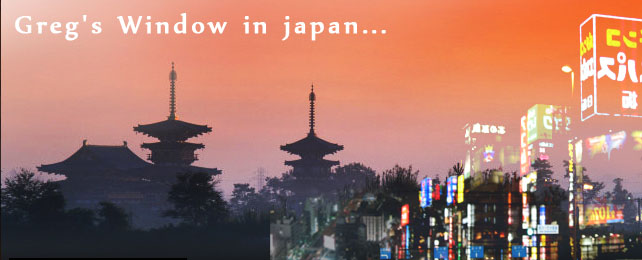
Ces mots que je vous fait partager sont ceux d'un des responsables de mon organisation, Il a travaille au ministere de la construction et des infrastructures puis au bureau des rivieres pendant trente ans sur la prevention des risques, c'est un specialiste reconnu, aujourd'hui, dans ce texte il parle juste comme un japonais face au drame que traverse son ile... C'est touchant et révélateur du caractere de ces insulaires(texte en anglais)
A Helpless FeelingBy Secretary General, Kotaro Takemura
| After the March 11th earthquake and tsunami, many foreigners fled Japan, and some companies moved their offices away from Tokyo to Nagoya or Osaka. People said "I never want to experience such an earthquake again. Why don't the Japanese flee from the Kanto region where the air is full of radioactive substances?" But whatever disasters may occur, the Japanese people have never fled their precarious archipelago. This is our fate. |
| Approximately 3000 years ago, the ancient Japanese started to grow rice on these islands. Alluvial plains, which are fertile and suitable for rice farming, are wetlands with mountains behind them and the sea in front. It was difficult for people to move to other places due to these topographic constraints. The various areas were separated from each other by mountains, sea, and rivers. |
| The Japanese began to build rice-based communities on the alluvial plains, separated from the outside world. Whenever disaster hit, they rebuilt their communities. During the age of provincial wars in the 16th century, daimyo or feudal lords, spent long days belligerently crossing mountains and sailing across straits. Farmers, however, never left their rice-farming communities. |
| Migratory People on Continents |
| In contrast to Japan, the terrain of the Eurasian continent doesn't restrict the movement of people. When droughts and cold weather struck an area, populations made an exodus to more fruitful lands. When they needed natural resources and riches, they extended their territories. World history is that of great migrations such as those of the Hsiung-Nu and Germanic peoples, and conquering expeditions by the Roman, Byzantine, Islamic, Mongol, and Ottoman empires. While the peoples of Eurasia were migrating and creating world history, the people of the Japanese archipelago remained on their own lands. |
| The March 11th earthquake and tsunami was unique in Japan's long history. For the first time people had to move, leaving their own communities behind. |
| Seventy Eight Thousand Residents living in the Evacuation Zone of Fukushima Daiichi Nuclear Power Plant |
| On April 22, 2011, the Japanese government issued an evacuation order for residents living within a 20-kilometer radius of the Fukushima Daiichi Nuclear Power Station. About 78,000 residents, who had already evacuated temporarily, were forced to remain outside the zone. When will the nuclear reactors be stabilized? How long will it take to restore polluted soil and groundwater? No one knows. |
| In the meantime, victims of the tsunami have lost everything, including their families, schools, and the old streets of their memories. However, they are staying in their hometowns. They are sure to overcome today's calamity and rebuild their towns, just as their ancestors did after catastrophic natural disasters and the ravages of war. |
| As long as there is land, we can rebuild our towns. The existence of land itself encourages residents. But 78,000 evacuees from the evacuation zone are not able to stay on their own land. There is no place for them to rebuild what they have lost. |
| I had never imagined that in today's Japan, one of the most advanced countries in the world, I would be overwhelmed by a feeling of yarusenai, or helplessness. The word yarusenai was originally used to describe a situation where a boat attempting to land has no shoal (se in Japanese) to anchor on, and remains drifting on the waves. When there is no place to anchor, the passengers cannot go ashore. The boat, washed away by the current, gradually drifts away. "What will become of us?", the passengers ask. "How long will we drift? Are there any shoals where we can anchor the boat?" More than 1000 years ago, when waterway transportation was common, the Japanese used the word "yarusenai" to describe a helpless, desolate feeling. |
| In the 21st century, residents of the evacuation zone around Fukushima Daiichi Nuclear Power Station have been forced to leave their homes. They live in temporary accommodations in unknown areas with no end in sight. I sympathize with them in their predicament, imagining how helpless and downhearted they feel. |




Aucun commentaire:
Enregistrer un commentaire